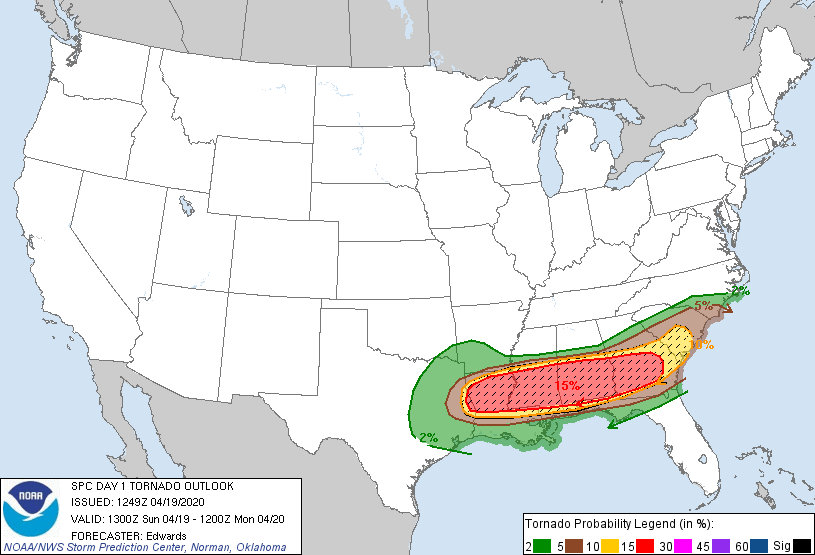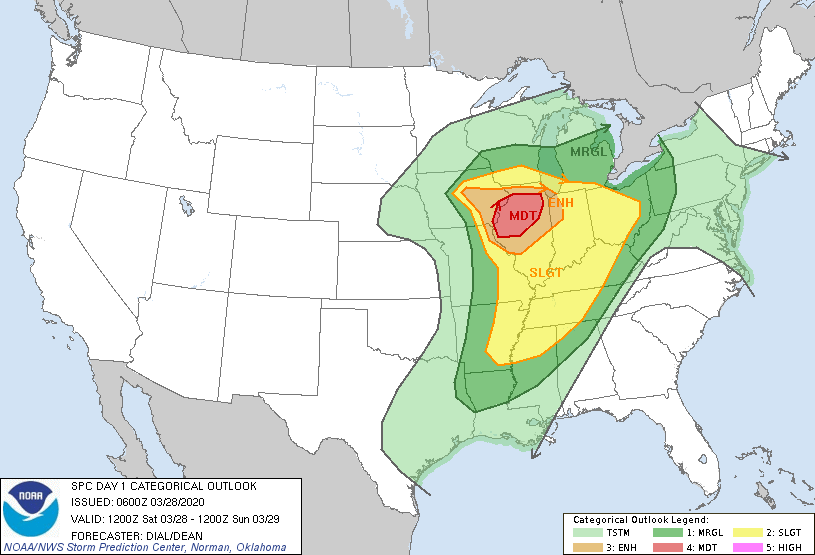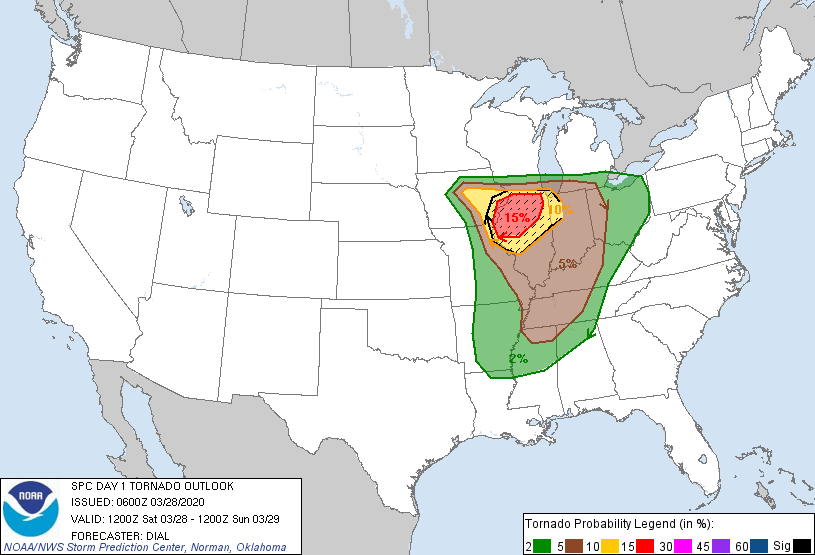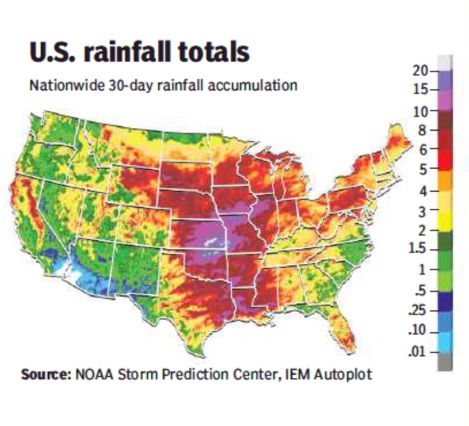In the ten years since I became interested in this question, there have been several significant advances in understanding the influence of topography on tornado development. The Midwest, a region known for flat and boring terrain, serves as an ideal testbed to observe these influences, offering the ability to isolate topographical variables against a flat control domain. This post seeks to identify topographical drivers and assess the physical mechanisms within a recent tornado outbreak that spawned over a dozen tornadoes across Ohio, Indiana, and Illinois on March 14th.
Zooming out to assess all possible terrain variables, Kellner (2012) first employs GIS methodologies to establish statistical correlations between tornado touchdown points and several spatial features: elevation, land use, surface roughness, antecedent rainfall, and more. Using a high-resolution buffer analysis, the study highlighted that 64% of all tornado touchdowns occurred near urban land use and 42% near forests, a moderate-to-strong correlation given the overwhelming presence of flat farmland and range. The consensus explanation for this correlation is that increased surface roughness causes more horizontal vorticity that can contribute rotational energy when advected into a tornadic storm via the streamwise vorticity current, though I would also posit that urban heat island effects can add significant energy (localized SBCAPE) as well. A strong example of this formation mechanism occurred when a tornado coalesced downwind of Muncie, IN as an EF2, briefly lifted off the ground over Farmland (that’s a town name, though the terrain type is implied), then churned at up to EF3 strength for another 40 miles into Ohio.

To dive deeper into the physics of tornado-ground interactions, Satrio (2020) experiments with a well-established LES model to simulate how a tornado-like vortex moves over various hill configurations. Near-ground flows have been a popular research topic for their damage potential and effects on vortex stability, inspiring numerous observational studies using radar, photogrammetry, and debris impact analysis. Satrio’s simulation results paint a particularly cogent picture of tornado dynamics, how uphill slopes can cause a low-level vortex disruption, how downhill slopes cause an intensification of swirl, and how vortices can bend to remain perpendicular to sloped terrain. All three of these effects can be clearly observed in the tornado that touched down near Hanover, IN: after crossing the Ohio River, the tornado weakened to an EF0 at the top of the first ridge, intensified to an EF2 as the track turned to follow the southern edge of the valley, weakened back to an EF0 over the second ridge, and reintensified to an EF2 upon crossing the valley again. Variations of this tornado evolution behavior have been corroborated numerous times in recent literature, most clearly by Lyza and Knupp (2018) on the periodic ridges of northeast Alabama, Bosart (2006) in the Hudson Valley, and Wagner (2018) near the Kansas River.

However, tornado damage paths do not always show such visible signatures of terrain influence. Sometimes, as in the brief EF2 tornado near Plymouth, OH, there are absolutely no interesting topographical features in sight (though I would argue that the absence of terrain heterogeneities likely prevented further intensification within this supercell). In other instances, inferences about the nature of storm inflow would be needed to consider any terrain interactions. For example, the long-track tornado that struck Lakeville, OH as an EF3 does not have any significant hills, cities, forests, or geographic boundaries along its path. But, when the initial EF0-EF1 tornado crossed Grand Lake, the vortex was turned northward to favor the inflow side. Several miles later, likely due to the increased humid inflow, the tornado reformed as an EF3 near Wapakoneta and rumbled for almost an hour toward the northern suburbs of Columbus. The presence of the urban/suburban roughness on the inflow side, along with the Scioto and Olentangy River valleys, likely gave this tornado the extra push to reform as a long-track EF1 near Delaware, OH. These terrain influences are more subtle and speculative, of course, but the potential for these types of observations sparked my interest in tornado simulation and prediction in the first place. I firmly believe that localized surface conditions play a major role in the formation of not just tornadoes but many weather phenomena, and it’s always gratifying to find physical evidence in support.



Tornado path maps from the NWS Damage Assessment Toolkit, preliminary data
















